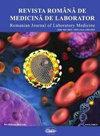重症肌无力患者非霍奇金淋巴瘤所致C1抑制剂缺乏致后天性血管性水肿1例
IF 0.5
4区 医学
Q4 MEDICINE, RESEARCH & EXPERIMENTAL
引用次数: 0
摘要
由于c1抑制剂缺乏引起的获得性血管性水肿是一种非常罕见的疾病,通常出现在淋巴增生性和/或自身免疫性疾病患者中。这种类型的肿胀是缓激肽介导的,对抗组胺药、皮质类固醇或肾上腺素没有反应。这些症状通常出现在年龄超过40岁的患者中,伴有反复发作的血管性水肿,但无皮疹。家族史为阴性。肿胀可以影响任何组织,但最常见的是位于面部、嘴唇、舌头、喉部或四肢。在胃肠道,它会引起疼痛、恶心、呕吐和腹泻。上呼吸道水肿是一个潜在的威胁生命的条件,由于窒息。水肿发作可能早于病因症状数月或数年。在大多数情况下,治疗基础疾病解决血管性水肿发作。在此,我们报告一例由非霍奇金淋巴瘤引起的C1-INH-AAE患者,多年前诊断为重症肌无力,经淋巴瘤特异性治疗后血管性水肿症状消失。本文章由计算机程序翻译,如有差异,请以英文原文为准。
Acquired Angioedema Due to C1 inhibitor Deficiency Caused by Non-Hodgkin Lymphoma in a Patient with Myasthenia Gravis
Abstract Acquired angioedema due to C1-inhibitor deficiency is a very rare disorder that usually appears in patients with lymphoproliferative and/or autoimmune diseases. This type of swelling is bradykinin mediated and does not respond to antihistamines, corticosteroids, or epinephrine. The symptoms usually appear in patients older than 40 years with recurrent episodes of angioedema without wheals. The family history is negative. The swelling could affect any tissue, but most frequently is located at the face, lips, tongue, larynx, or extremities. In the gastrointestinal tract, it causes pain, nausea, vomiting, and diarrhea. The upper respiratory airway oedema is a potentially life-threatening condition due to asphyxiation. The oedema attacks may precede the symptoms of the causative disease for months or years. In most cases, the treatment of the underlying disease resolves the angioedema episodes. Here we report a case of C1-INH-AAE caused by non-Hodgkin lymphoma in a patient diagnosed many years before with myasthenia gravis whose angioedema symptoms resolved after the specific treatment of lymphoma.
求助全文
通过发布文献求助,成功后即可免费获取论文全文。
去求助
来源期刊

Revista Romana De Medicina De Laborator
MEDICINE, RESEARCH & EXPERIMENTAL-
CiteScore
0.31
自引率
20.00%
发文量
43
审稿时长
>12 weeks
期刊介绍:
The aim of the journal is to publish new information that would lead to a better understanding of biological mechanisms of production of human diseases, their prevention and diagnosis as early as possible and to monitor therapy and the development of the health of patients
 求助内容:
求助内容: 应助结果提醒方式:
应助结果提醒方式:


